995 scholarly books by The Institution of Engineering and Technology and 83
have author last names that start with B
995 scholarly books by The Institution of Engineering and Technology and 83
995 scholarly books by The Institution of Engineering and Technology
83 have author last names that start with B have author last names that start with B
83 have author last names that start with B have author last names that start with B
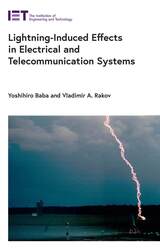
Lightning-Induced Effects in Electrical and Telecommunication Systems
Yoshihiro Baba
The Institution of Engineering and Technology, 2021
Power and telecommunications systems are growing increasingly complex. This increases their vulnerability to lightning-related effects.
[more]

Fabrication of GaAs Devices
Albert G. Baca
The Institution of Engineering and Technology, 2005
This book provides fundamental and practical information on all aspects of GaAs processing and gives pragmatic advice on cleaning and passivation, wet and dry etching and photolithography. Other topics covered include device performance for HBTs (Heterojunction Bipolar Transistors) and FETs (Field Effect Transistors), how these relate to processing choices, and special processing issues such as wet oxidation, which are especially important in optoelectronic devices. This book is suitable for both new and practising engineers.
[more]

Ferrites at Microwave Frequencies
A.J. Baden Fuller
The Institution of Engineering and Technology, 1987
Between 1950 and 1965, there was a spate of intense activity to investigate the theory and application of ferrite materials at microwave frequencies, and in the early 1960s a number of textbooks on the microwave applications of ferrites were published, but nothing comprehensive since. Now this book has been written to consolidate all the investigations of ferrites for microwave applications, to look back at earlier publications from the viewpoint of a mature technology, and to bring the story up to date. This book attempts to give all the structures and applications using ferrites at microwave frequencies that havebeen investigated or contemplated, using the engineer's rather than the physicist's approach. It starts with a full mathematical treatment of the interaction of an electromagnetic wave with a gyromagnetic ferrite material for simple boundary conditions. These results are then extended to give a field descriptive approach to describe the mode of operation of all the different microwave devices.
[more]
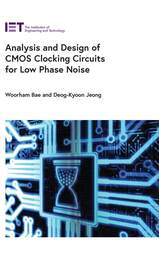
Analysis and Design of CMOS Clocking Circuits For Low Phase Noise
Woorham Bae
The Institution of Engineering and Technology, 2020
As electronics continue to become faster, smaller and more efficient, development and research around clocking signals and circuits has accelerated to keep pace. This book bridges the gap between the classical theory of clocking circuits and recent technological advances, making it a useful guide for newcomers to the field, and offering an opportunity for established researchers to broaden and update their knowledge of current trends.
[more]

Mathematical Quantum Physics for Engineers and Technologists
Fundamentals
Alireza Baghai-Wadji
The Institution of Engineering and Technology, 2023
Continuing size reduction in mesoscopic and nanoscopic electronic, photonic, and plasmonic devices makes the employment of quantum physics (QP) and quantum electrodynamics (QED) inevitable. Engineers at the forefront of these fields increasingly need to have a working knowledge of QP and, more importantly, feel confident to manoeuver through the intricate calculations involved. However, electrical engineers and applied physicists are typically unfamiliar with the sophisticated mathematical apparatus in QP and QED, which is generally perceived to be formidably abstract.
[more]
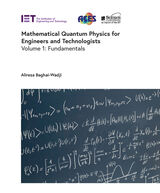
Mathematical Quantum Physics for Engineers and Technologists
Fundamentals, Volume 1
Alireza Baghai-Wadji
The Institution of Engineering and Technology, 2023
Continuing size reduction in mesoscopic and nanoscopic electronic, photonic, and plasmonic devices makes the employment of quantum physics (QP) and quantum electrodynamics (QED) inevitable. Engineers at the forefront of these fields increasingly need to have a working knowledge of QP and, more importantly, feel confident to manoeuver through the intricate calculations involved. However, electrical engineers and applied physicists are typically unfamiliar with the sophisticated mathematical apparatus in QP and QED, which is generally perceived to be formidably abstract.
[more]

Mathematical Quantum Physics for Engineers and Technologists
Governing equations, Volume 2
Alireza Baghai-Wadji
The Institution of Engineering and Technology, 2024
Continuing size reduction in mesoscopic and nanoscopic electronic, photonic, and plasmonic devices makes the employment of quantum physics (QP) and quantum electrodynamics (QED) inevitable. Engineers at the forefront of these fields increasingly need to have a working knowledge of QP and, more importantly, feel confident to manoeuver through the intricate calculations involved. However, electrical engineers and applied physicists are typically unfamiliar with the sophisticated mathematical apparatus in QP and QED, which is generally perceived to be formidably abstract.
[more]
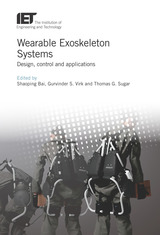
Wearable Exoskeleton Systems
Design, control and applications
Shaoping Bai
The Institution of Engineering and Technology, 2018
Wearable exoskeletons are electro-mechanical systems designed to assist, augment, or enhance motion and mobility in a variety of human motion applications and scenarios. The applications, ranging from providing power supplementation to assist the wearers to situations where human motion is resisted for exercising applications, cover a wide range of domains such as medical devices for patient rehabilitation training recovering from trauma, movement aids for disabled persons, personal care robots for providing daily living assistance, and reduction of physical burden in industrial and military applications. The development of effective and affordable wearable exoskeletons poses several design, control and modelling challenges to researchers and manufacturers. Novel technologies are therefore being developed in adaptive motion controllers, human-robot interaction control, biological sensors and actuators, materials and structures, etc.
[more]

Tidal Power
A.C. Baker
The Institution of Engineering and Technology, 1991
The tides, generated by the revolution of the earth in the gravitational fields of the sun and moon, are an enormous resource of renewable energy. Moreover, the times and heights of tides can be accurately predicted well into the future. However, tidal ranges in the oceans vary from 50cm or less to over 10 m, and it is the largest tides that represent the best energy source. This book describes how large tides develop in particular places and how the energy could be extracted by building suitable barrages. The principal features of a barrage and possible methods of operation are described in detail. Although a tidal power barrage would be non-polluting, the resulting changes in the tidal regime would have important environmental effects. These are discussed together with the economics of tidal power. Methods of assessing the likely cost of electricity from any site are set out and applied to possible sites around the world.
[more]
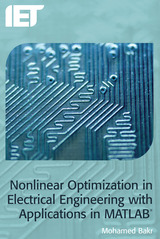
Nonlinear Optimization in Electrical Engineering with Applications in MATLAB®
Mohamed Bakr
The Institution of Engineering and Technology, 2013
Nonlinear Optimization in Electrical Engineering with Applications in MATLAB® provides an introductory course on nonlinear optimization in electrical engineering, with a focus on applications such as the design of electric, microwave, and photonic circuits, wireless communications, and digital filter design.
[more]
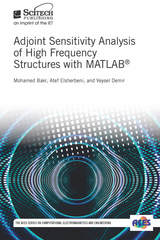
Adjoint Sensitivity Analysis of High Frequency Structures with MATLAB®
Mohamed H. Bakr
The Institution of Engineering and Technology, 2017
This book presents the theory of adjoint sensitivity analysis for high frequency applications through time-domain electromagnetic simulations in MATLAB®. This theory enables the efficient estimation of the sensitivities of an arbitrary response with respect to all parameters in the considered problem. These sensitivities are required in many applications including gradient-based optimization, surrogate-based modeling, statistical analysis, and yield analysis.
[more]
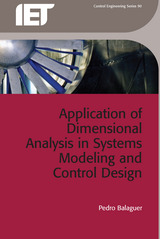
Application of Dimensional Analysis in Systems Modeling and Control Design
Pedro Balaguer
The Institution of Engineering and Technology, 2013
Dimensional analysis is an engineering tool that is widely applied to numerous engineering problems, but has only recently been applied to control theory and problems such as identification and model reduction, robust control, adaptive control, and PID control.
[more]
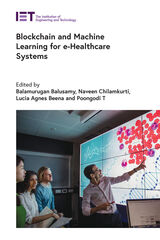
Blockchain and Machine Learning for e-Healthcare Systems
Balusamy Balamurugan
The Institution of Engineering and Technology, 2021
Blockchain and machine learning technologies can mitigate healthcare issues such as slow access to medical data, poor system interoperability, lack of patient agency, and data quality and quantity for medical research. Blockchain technology facilitates and secures the storage of information in such a way that doctors can see a patient's entire medical history, but researchers see only statistical data instead of any personal information. Machine learning can make use of this data to notice patterns and give accurate predictions, providing more support for the patients and also in research related fields where there is a need for accurate data to predict credible results.
[more]

Continuous Time Controller Design
R. Balasubramanian
The Institution of Engineering and Technology, 1989
This book covers theoretical methods for the design of continuous time controllers for linear multivariate systems. It is intended for use by those wishing to build on a first course in control systems, either to expand their knowledge as practising engineers or as postgraduate students doing higher degrees in control engineering.
[more]
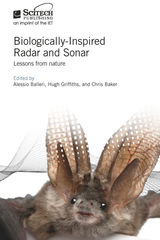
Biologically-Inspired Radar and Sonar
Lessons from nature
Alessio Balleri
The Institution of Engineering and Technology, 2017
Nature presents examples of active sensing which are unique, sophisticated and incredibly fascinating. There are animals that sense the environment actively, for example through echolocation, which have evolved their capabilities over millions of years and that, as a result of evolution, have developed unique in-built sensing mechanisms that are often the envy of synthetic systems.
[more]
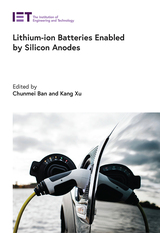
Lithium-ion Batteries Enabled by Silicon Anodes
Chunmei Ban
The Institution of Engineering and Technology, 2021
Deploying lithium-ion (Li-ion) batteries depends on cost-effective electrode materials with high energy and power density to facilitate lower weight and volume. Si-based anode materials theoretically offer superior lithium storage capacity. Replacing a graphite anode with high-capacity materials such as silicon will further improve the energy density. Durable, low-cost, and high-energy-density materials are vital to developing plug-in electric vehicles as affordable and convenient as gasoline-powered ones, while reducing carbon emissions.
[more]
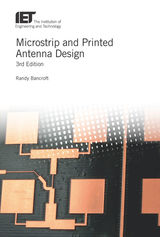
Microstrip and Printed Antenna Design
Randy Bancroft
The Institution of Engineering and Technology, 2020
This thoroughly updated third edition of this popular book covers all types of printed microstrip antenna design, from rectangular to circular, broadband and dual band, and millimeter wave microstrip antenna to microstrip arrays.
[more]
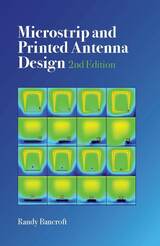
Microstrip and Printed Antenna Design
Randy Bancroft
The Institution of Engineering and Technology, 2009
The approach in this book is historical and practical. It covers basic designs in more detail than other microstrip antenna books that tend to skip important electrical properties and implementation aspects of these types of antennas. Examples include: quarter-wave patch, quarter by quarter patch, detailed design method for rectangular circularly polarized patch, the use of the TM11 (linear and broadside CP), TM21 (monopole CP pattern) and TM02 (monopole linear) circular patch modes in designs, dual-band antenna designs which allow for independent dual-band frequencies. Limits on broadband matching are discussed. The appendix contains useful simple matching approaches, design details (gain, matching, sidelobes) of the little-studied omnidirectional microstrip antenna (OMA), limits and properties of common single and dual band Planar Inverted F Antenna (PIFA) antenna designs. The second edition has numerous additions to the earlier text which will make the concepts presented clearer. New cavity model analysis equations of circular polarization bandwidth, axial ratio bandwidth and power fraction bandwidth have been included. The section on omnidirectional microstrip antennas is expanded with further design options and analysis. This is also true of the section on Planar Inverted F (PIFA) antennas. The discovery and description of the fictious resonance mode of a microstrip slot antenna has been added to that section. Appendix A, on microstrip antenna substrates has been expanded to provide more detail on the types of substrate and their composition. This is often neglected in other texts. An appendix on elementary impedance matching techniques has been added as these methods have proven useful in my industrial work.
[more]

Electrochemical Power Sources
Primary and secondary batteries
M. Barak
The Institution of Engineering and Technology, 1980
The variety and scope of primary and secondary battery applications in domestic goods and capital equipment for civilian and military uses has steadily grown over the years. Annual global sales of the battery business are exceeding £4000 million, encouraging a number of books on individual battery systems.
[more]
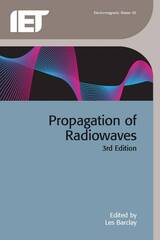
Propagation of Radiowaves
Les Barclay
The Institution of Engineering and Technology, 2012
Propagation of Radiowaves introduces the basic concepts and mechanisms of radiowave propagation engineering in both the troposphere and ionosphere, an understanding of which is fundamental to the effective use of the radio spectrum for radiocommunication. Reflecting the wide experience of the exceptional group of authors, the contents provide a firm background to established theory and introduce the most appropriate models, methods and procedures which are of use to spectrum planners, system designers and operators in assessing the estimated performance of radio systems.
[more]
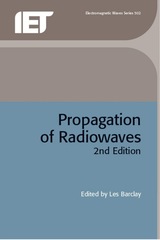
Propagation of Radiowaves
Les Barclay
The Institution of Engineering and Technology, 2003
The field of radio communications continues to change rapidly, and the second edition of this outstanding book, based on a popular IEE Vacation School, has been fully updated to reflect the latest developments. The introduction of new services and the proliferation of mobile communications have produced a growing need for wider bandwidths and the consequent need for frequency reuse. This book introduces the basic concepts and mechanisms of radiowave propogation engineering in both the troposphere and ionosphere, and includes greater emphasis on the needs of digital technologies and new kinds of radio systems. The content reflects the wide experience of an exceptional group of authors and the emphasis throughout is on modelling and prediction methods and the relevant ITU Radiocommunication Sector recommendations. Propagation of Radiowaves, 2nd Edition is essential reading for professionals involved in planning, designing and operating radio systems, as well as postgraduate students in the field.
[more]
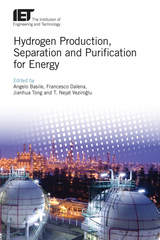
Hydrogen Production, Separation and Purification for Energy
Angelo Basile
The Institution of Engineering and Technology, 2017
Hydrogen is one of the most promising next-generation fuels. It has the highest energy content per unit weight of any known fuel and in comparison to the other known natural gases it is environmentally safe - in fact, its combustion results only in water vapour and energy. This book provides an overview of worldwide research in the use of hydrogen in energy development, its most innovative methods of production and the various steps necessary for the optimization of this product.
[more]

A Management Guide to Logistics Engineering
K. Beal
The Institution of Engineering and Technology, 1989
This guide will prove a great help to businesses in providing the pratical advice that will enable them to master the art of logistics so it can be used to their best business advantage.
[more]

Exhibiting Electricity
K.G. Beauchamp
The Institution of Engineering and Technology, 1997
Throughout the 19th and 20th centuries technical exhibitions, held for the benefit of both cognoscente and the general public alike, have presented a mirror to the progress of science, engineering and, towards the second half of the 19th century and throughout the 20th century, to electrical technology.
[more]
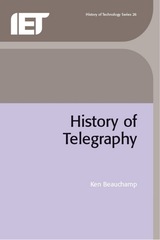
History of Telegraphy
Ken Beauchamp
The Institution of Engineering and Technology, 2001
A dominating theme of the 21st Century will be the transmission and processing of information as the global network of communication channels continues to develop. The emergence of today's digital communications technology owes much to the growth of telegraphy in the 19th and 20th Centuries. The realisation of cheap long-distance communication using telegraphy stimulated the initial design and development of coded transmissions that proved vital in both World Wars for use on land, sea, and in the air. Methods of data compaction, coding and encryption in modern communication systems all have their origins in the techniques used by the telegraph pioneers. In fact the two main phases of telegraph development - cable-based techniques that began in the early 19th Century and wireless transmission in the 20th Century - parallel the changes in voice and information communications seen recently.
[more]

Electrical Steels for Rotating Machines
Philip Beckley
The Institution of Engineering and Technology, 2002
Electrical steels are used to form the ferromagnetic cores of motors, generators and transformers. This book provides an insight for the electrical design engineer into what properties may be expected from electrical steels and how these properties may best be exploited in machine design.
[more]

Design of Modern Control Systems
D.J. Bell
The Institution of Engineering and Technology, 1982
This book presents developments in analysis and design techniques for control systems. Included are exciting results for feedback systems using complex variable methods, the important concept of robustness in controller design and the increasingly important topic of decentralized control for large scale systems. These and many other contributions illustrate the great activity and rapid progress which has taken place in the subject over the past few years. Only by bringing these contributions together under one cover can the practising engineer in industry and indeed the engineer in university or polytechnic keep fully informed on the 'state of the art' on a number of different fronts. Application of the theoretical developments and practical aspects of the subject are not forgotten; analysis and design of a nuclear boiler and some direct digital control system design procedures are but two topics discussed in the present book. Several of the chapters are followed by problems on the subject matter and worked solutions to most of these problems are given at the end of the book. This aspect will find favour with many readers since such contributions are often a great help in the understanding of the subject matter.
[more]
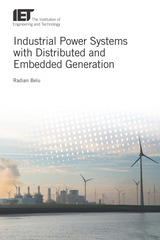
Industrial Power Systems with Distributed and Embedded Generation
Radian Belu
The Institution of Engineering and Technology, 2019
Energy for today's complex electrical power systems is increasingly being generated and distributed locally using small-scale, renewable energy sources. The addition of renewables to the grid requires new tools and operation methods, both for suppliers and industrial consumers. This book describes the supporting technologies that can turn conventional passive electricity delivery networks into the active networks of the future, with a focus on electricity utilization in the industrial environment. It examines the integration of the new, dispersed sources with the legacy systems of centralised generation, as well as how the new technologies can operate effectively in isolated systems. Industrial power distribution, lighting, motor control and protection are discussed in detail.
[more]

Design, Control and Monitoring of Tidal Stream Turbine Systems
Mohamed Benbouzid
The Institution of Engineering and Technology, 2023
The worldwide potential of electric power from tidal currents is potentially between 100 and 120 GW. The technology uses the ebb and flow currents off coasts to drive submerged turbines. The high load factor and the predictable resource characteristics make tidal energy an attractive, reliable power source. The technology is advancing rapidly towards maturity; several projects have now reached a relatively mature stage and are close to completion, but challenges remain. Topics for ongoing research include hydrodynamics and turbine design, as well as the power conversion interface (including the electric generator), control, and monitoring and maintenance challenges.
[more]
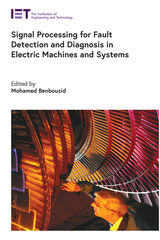
Signal Processing for Fault Detection and Diagnosis in Electric Machines and Systems
Mohamed Benbouzid
The Institution of Engineering and Technology, 2021
Over the last three decades, the search for competitiveness and growth gains has driven the evolution of machine maintenance policies, and the industry has moved from passive maintenance to active maintenance with the aim of improving productivity. Active maintenance requires continuous monitoring of industrial systems in order to increase reliability, availability rates and guarantee the safety of people and property.
[more]
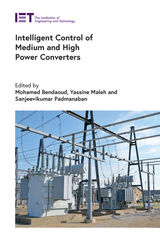
Intelligent Control of Medium and High Power Converters
Mohamed Bendaoud
The Institution of Engineering and Technology, 2023
The growing share of renewable energies, as well as the rising demand for electricity for transport and heating, are increasing the importance of power converters and the requirements for reliability and control. Intelligent control can increase converter efficiency, reducing size and weight. The application of intelligent control techniques to power converters has therefore recently become a focus of research.
[more]

A History of Control Engineering 1800-1930
S. Bennett
The Institution of Engineering and Technology, 1979
Feedback is a crucial concept of modern engineering, whose use has spilled over into many other disciplines.
[more]

Computer Control of Real-Time Processes
S. Bennett
The Institution of Engineering and Technology, 1990
This book provides an introduction to many aspects of computer control. It covers techniques or control algorithm design and tuning of controllers; computer communications; parallel processing; and software design and implementation. The theoretical material is supported by case studies covering power systems control, robot manipulators, liquid natural as vaporisers, batch control of chemical processes; and active control of aircraft.
[more]

A History of Control Engineering 1930-1955
Stuart Bennett
The Institution of Engineering and Technology, 1993
In the twenty-five years between 1930 and 1955 crucial changes in our understanding of feedback control systems occurred. The history of these developments is traced in this book.
[more]

Spread Spectrum in Mobile Communication
Olav Berg
The Institution of Engineering and Technology, 1998
Mobile communication is one of the most important applications in the tele-communications and IT field. Developments in technology are enabling the design of advanced mobile radio networks linking information processing and data routing, with the radio segment sandwiched between layers of digital signal processors. Spread spectrum technology adapts radio communication to computational data information processing networks.
[more]

Electricity Economics and Planning
T.W. Berrie
The Institution of Engineering and Technology, 1992
This book is unique in gathering under one over all the elements of electricity economics and planning, both for the traditional approach and for the new developments of the 1990s, e.g. privatisation, competition, deregulation and more efficient markets and pricing. All the fundamental institutional aspects of electricity in the 1990s are also discussed, particularly relevant at a time when the utilities of the developed world are being restructured, those of the ex-centrally planned economies are being profoundly reorganised and those of developing countries have enormous debt problems. The book describes how these challenges of the 1990s are to be understood and met.
[more]

Blockchain Technology for Secure Social Media Computing
Robin Singh Bhadoria
The Institution of Engineering and Technology, 2023
Blockchain is a digital ledger of transactions duplicated and distributed across an entire network of computer systems on the blockchain which makes it more difficult to hack or tamper with. The popularity of blockchain has been increasing with the growth of social media and the internet of things (IoT). Social media are interactive digitally mediated technologies that facilitate the creation or sharing and exchange of information, ideas, opinions and interests via virtual communities and social network platforms. However, unmonitored social accounts can be the target of hackers who post fraudulent messages or virus-infected links that spread to contacts and followers, and "employee weakness" is responsible for 20% of cyberattacks in companies. So, it has become essential to secure both personal and professional social media networks, accounts and data.
[more]
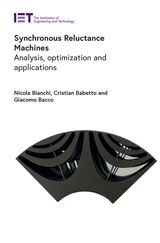
Synchronous Reluctance Machines
Analysis, optimization and applications
Nicola Bianchi
The Institution of Engineering and Technology, 2022
Reluctance motors induce non-permanent magnetic poles on the ferromagnetic rotor; the rotor does not have any windings and torque is generated through magnetic reluctance. Synchronous reluctance motors (SyRMs) have an equal number of stator and rotor poles. Reluctance motors can deliver high power density at low cost, so they are finding increasing application in the transport sector. Disadvantages include high torque ripple and the complexity of designing and controlling them. Advances in theory, computer design, and control electronics can overcome these issues.
[more]
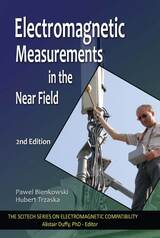
Electromagnetic Measurements in the Near Field
Pawel Bienkowski
The Institution of Engineering and Technology, 2012
This book is devoted to the specific problems of electromagnetic field (EMF) measurements in the near field and to the analysis of the main factors which impede accuracy in these measurements. It focuses on careful and accurate design of systems to measure in the near field based on a thorough understanding of the fundamental engineering principles and on an analysis of the likely system errors. Beginning with a short introduction to electromagnetic fields with an emphasis on the near field, it then presents methods of EMF measurements in near field conditions. It details the factors limiting measurement accuracy including internal ones (thermal stability, frequency response, dynamic characteristics, susceptibility) and external ones (field integration, mutual couplings between a probe and primary and secondary EMF sources, directional pattern deformations). It continues with a discussion on how to gauge the parameters declared by an EMF meter manufacturer and simple methods for testing these parameters. It also details how designers of measuring equipment can reconsider the near field when designing and testing, as well as how users can exploit the knowledge within the book to ensure their tests and results contain the most accurate measurements possible. The SciTech Publishing Series on Electromagnetic Compatibility provides a continuously growing body of knowledge in the latest development and best practices in electromagnetic compatibility engineering. This series provides specialist and non-specialist professionals and students practical knowledge that is thoroughly grounded in relevant theory.
[more]

Robots and Automated Manufacture
J. Billingsley
The Institution of Engineering and Technology, 1985
To serve its purpose, an industrial robot must be harnessed to a manufacturing task, be it welding, assembly, adjustment or the inspection of food products. Complex tasks are likely to require offline programming, both for economy of equipment use and to permit computer simulations for collision avoidance. Vision and other sensory systems are helping to extend the capabilities of robots, while advanced programming techniques are making their use more accessible to the shop floor.
[more]

AI for Power Electronics and Renewable Energy Systems
Frede Blaabjerg
The Institution of Engineering and Technology, 2024
Rising shares of renewable energy are needed to stave off catastrophic climate change, but also bring about the challenge of intermittency, jeopardizing power quality. Instead of large central generation units, many distributed generators and loads need to be managed in order to integrate renewable energy with power systems.
[more]
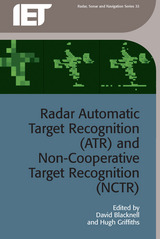
Radar Automatic Target Recognition (ATR) and Non-Cooperative Target Recognition (NCTR)
David Blacknell
The Institution of Engineering and Technology, 2013
The ability to detect and locate targets by day or night, over wide areas, regardless of weather conditions has long made radar a key sensor in many military and civil applications. However, the ability to automatically and reliably distinguish different targets represents a difficult challenge. Radar Automatic Target Recognition (ATR) and Non-Cooperative Target Recognition (NCTR) captures material presented in the NATO SET-172 lecture series to provide an overview of the state-of-the-art and continuing challenges of radar target recognition.
[more]
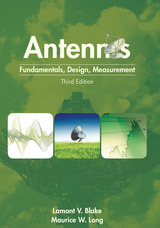
Antennas
Fundamentals, design, measurement
Lamont V. Blake
The Institution of Engineering and Technology, 2009
This is a professional level, introductory text on antenna principles, design, analysis, and measurements. It is especially suitable for persons who wish to improve their knowledge of antenna principles, concept design, performance analyses, and measurements. It is not a cookbook-like catalog for antenna design, nor does its understanding require a familiarity with electromagnetic theory, sophisticated mathematics, or complex computer techniques. The 3rd Edition updates and expands the original text by Lamont Blake, which was prepared at the undergraduate engineering, science, or technology level. For providing technical depth at the senior and graduate university levels, additions to the original book include a greatly expanded Chapter 7 on Antennas with Special Properties, a brand new Chapter 8 on Electronically Steered Arrays, and a revised Chapter 9 on Measurements. Also new to this edition are numerous appendices to the updated text.
[more]
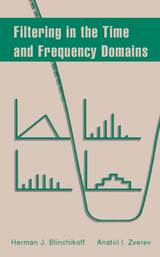
Filtering in the Time and Frequency Domains
Herman J. Blinchikoff
The Institution of Engineering and Technology, 2001
Long regarded as a classic of filter theory and design, this book stands as the most comprehensive treatment of filtering techniques, devices and concepts as well as pertinent mathematical relationships. Analysis and theory are supplemented by detailed design curves, fully explained examples and problem and answer sections. Discussed are the derivation of filtering functions, Fourier, Laplace, Hilbert and z transforms, lowpass responses, the transformation of lowpass into other filter types, the all-pass function, the effect of losses on theoretical responses, matched filtering, methods of time-domain synthesis, and digital filtering. This book is invaluable for engineers other than those who are filter design specialists who need to know about the possibilities and limits of the filtering process in order to use filters competently and confidently in their system designs.
[more]
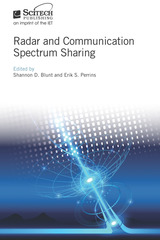
Radar and Communication Spectrum Sharing
Shannon D. Blunt
The Institution of Engineering and Technology, 2019
Radar and Communication Spectrum Sharing addresses the growing conflict over use of the radio-frequency spectrum by different systems, such as civil and security applications of radar and consumer use for wireless communications. The increasing demand for this finite resource is driving innovation into new ways in which these diverse systems can cohabit the spectrum. The book provides a broad survey of recent and ongoing work on the topic of spectrum sharing, with an emphasis on identifying the technology gaps for practical realization and the regulatory and measurement compliance aspects of this problem space. The introductory section sets the scene, making the case for spectrum access and reviewing spectrum use, congestion, lessons learned, ways forward and research areas. The book then covers system engineering perspectives, the issues involved with addressing interference, and radar/communication co-design strategies. With contributions from an international panel of experts, this book is essential reading for researchers, engineers and advanced students in radar, communications, navigation, and electronic warfare whose work is impacted by spectrum engineering requirements.
[more]
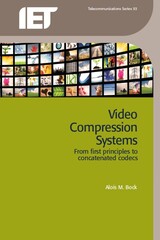
Video Compression Systems
From first principles to concatenated codecs
Alois M. Bock
The Institution of Engineering and Technology, 2009
Digital video compression has revolutionised the broadcast industry. Its implementation has been the vital key to the expansion of video via satellite, cable, internet and terrestrial TV. However, new technologies not only enable new applications, they also create new challenges such as how to measure video quality, and how to maintain video quality in concatenated compression systems.
[more]
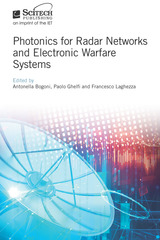
Photonics for Radar Networks and Electronic Warfare Systems
Antonella Bogoni
The Institution of Engineering and Technology, 2019
Microwave photonics is an emerging interdisciplinary area that investigates the deep interactions between microwaves and light waves for efficient generation, distribution, processing, control, and sensing of microwave, millimeter-wave, and terahertz signals. This book outlines the potential for microwave photonics in radar and electronic warfare systems, covering basic concepts and functions, comparing performance with conventional systems, describing its impact on digital signal processing, and exploring integration issues.
[more]
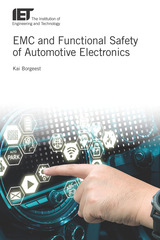
EMC and Functional Safety of Automotive Electronics
Kai Borgeest
The Institution of Engineering and Technology, 2018
Electromagnetic compatibility (EMC) deals with the unintentional propagation and reception of electromagnetic energy which may cause disturbances or even physical damage in electronic or electromechanical systems. With the increase in number and density of electronic devices and systems in modern vehicles, EMC has become a substantial concern and a key cause of malfunction of automotive electronics.
[more]

Geometrical Theory of Diffraction
V.A. Borovikov
The Institution of Engineering and Technology, 1994
The geometrical theory of diffraction (GTD) is an efficient method of analysis and design of wave fields. It is widely used in antenna synthesis in microwave, millimetre and infra-red bands, in circuit engineering and laser system design. It is a convenient tool for tackling the problems of wave propagation and scattering at bodies of complex shape. The method combines the simplicity and physical transparency of geometrical optics with high computational accuracy over a wide dynamic range of quantities analysed. The advantage of GTD is particularly pronounced in applications where the wavelength is small compared with the typical size of scatterers, i.e. in situations where the known analytical techniques - variational calculus and numerical analysis - are no longer applicable.
[more]
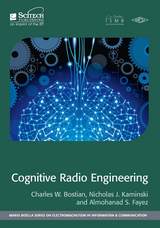
Cognitive Radio Engineering
Charles W. Bostian
The Institution of Engineering and Technology, 2016
A cognitive radio is a transceiver which is aware of its environment, its own technical capabilities and limitations, and those of the radios with which it may communicate; is capable of acting on that awareness and past experience to configure itself in a way that optimizes its performance; and is capable of learning from experience. In a real sense, a cognitive radio is an intelligent communications system that designs and redesigns itself in real time.
[more]
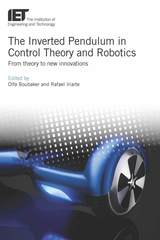
The Inverted Pendulum in Control Theory and Robotics
From theory to new innovations
Olfa Boubaker
The Institution of Engineering and Technology, 2018
The inverted pendulum is a classic problem in dynamics and control theory and is widely used as a benchmark for testing control algorithms. It is also an area of active study, with many new innovations and applications - for example the problem is solved in the technology of the Segway, a self-balancing transportation device.
[more]
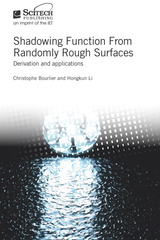
Shadowing Function from Randomly Rough Surfaces
Derivation and applications
Christophe Bourlier
The Institution of Engineering and Technology, 2019
The shadowing function is an important element in the simulation and calculation of how electromagnetic waves scatter at randomly rough surfaces. Its derivation and use is an active, interdisciplinary area of research with practical applications in fields such as radar, optics, acoustics, geoscience, computer graphics and remote sensing.
[more]
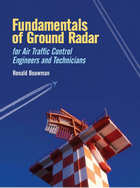
Fundamentals of Ground Radar for Air Traffic Control Engineers and Technicians
Ronald D. Bouwman
The Institution of Engineering and Technology, 2009
This is a standard reference for FAA and military air traffic control engineers and maintenance technicians focused on ground-based radar systems. With the evolution and increasing sophistication of modern radar systems, now more than ever a single-source reference is needed that contains simply understandable information on MTI, MTD, and Air Traffic Control Radar Beacon systems. There is a downside to the drive away from knowledge-based problem solving...massive increases in costs and waste inherent in the idea of lowest replaceable units. Fewer technicians are expected to manage more systems while knowing less about their equipment. This unique training and reference text will not only provide answers for day-to-day tasks, it will also help allay cost increases and waste.
[more]

Sir Charles Wheatstone FRS, 1802-1875
Brian Bowers
The Institution of Engineering and Technology, 2001
Charles Wheatstone began his life-long involvement with electrical engineering in the days when it was still at the stage of 'philosophical toys', yet he had a vision of telecommunications that could deliver printed messages around the world. With W.E. Cooke he developed the first practical electric telegraph. The problems of operating telegraphs over long distances led him into the field of electrical measurements.
[more]
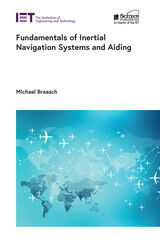
Fundamentals of Inertial Navigation Systems and Aiding
Michael Braasch
The Institution of Engineering and Technology, 2022
The aim of this book is to provide an advanced introduction to inertial data processing (determination of attitude, velocity and position) along with design architectures and algorithms used to aid the inertial navigation system (INS). The emphasis is on the high-end sensors and systems used in aerospace applications (known as 'navigation grade' or 'nav grade').
[more]

Knowledge Discovery and Data Mining
M.A. Bramer
The Institution of Engineering and Technology, 1999
Modern computing systems of all kinds accumulate various data at an almost unimaginable rate. Alongside the advances in technology that make such storage possible has grown a realisation that buried within this mass of data there may exist some knowledge of considerable value. This could be information critical for a company's business success or something leading to a scientific or medical discovery or breakthrough. Most data is simply stored and never examined, but machine-learning technology has the potential to extract knowledge of value (i.e. data mining).
[more]
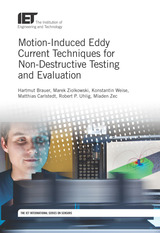
Motion-Induced Eddy Current Techniques for Non-Destructive Testing and Evaluation
Hartmut Brauer
The Institution of Engineering and Technology, 2019
Non-destructive testing (NDT) analysis techniques are used in science, technology and medicine to evaluate the properties of a material, component or system, without causing damage or altering the article being inspected. It is a highly valuable technique that can save money and time in product evaluation, troubleshooting, and research. Well known and widely used in industrial applications since the 60s, the NDT market is developing and growing fast. This book focuses on electromagnetic NDT methods and more specifically on the motion induced eddy current testing and evaluation (MIECTE) techniques used for conductive materials via electromagnetic methods, focusing on the Lorentz force eddy current testing (LET) method which was introduced recently. The authors present the modelling and simulation of LET systems as well as the optimal design of the measurement setups. They also show the wide variety of applications of the LET method including defect identification and sigmometry to estimate electrical conductivity of the tested material.
[more]

Innovation and the Communications Revolution
From the Victorian pioneers to broadband Internet
John Bray
The Institution of Engineering and Technology, 2002
This book describes the stage-by-stage creation and development, from the mid-nineteenth century to the present day, of the remarkable global communications technologies that have profoundly transformed the way that people live and work.
[more]

Data Communications and Networks
R.L. Brewster
The Institution of Engineering and Technology, 1994
There has been unprecedented development in data communications and services since the first edition of this book was published in 1986. In less than a decade the technology has advanced beyond all recognition and the first edition is now really no more than an interesting historical record. The second edition, published in 1989, reflected some of these developments and introduced the then emerging proposals for an integrated services digital network (ISDN). Since that date ISDN has become a fact and has already begun to be superseded by proposals and standards for a broadband ISDN (B-ISDN), offering greatly enhanced and flexible data rates over a public network based mainly on optical fibre transmission. Optical fibre technology is also being used in wide-area private digital networks and for high-capacity internetworking operations.
[more]
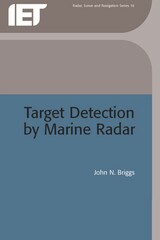
Target Detection by Marine Radar
John N. Briggs
The Institution of Engineering and Technology, 2004
Radar is a legal necessity for the safe navigation of merchant ships, and within vessel traffic services is indispensable to the operation of major ports and harbours. Target Detection by Marine Radar concentrates solely on civil marine operations and explains how marine surveillance radars detect their targets. The book is fully illustrated and contains worked examples to help the reader understand the principles underlying radar operation and to quantify the importance of factors such as the technical features of specific equipment, the weather, target reflection properties, and the ability of the operator. The precision with which targets are positioned on the radar screen and with which their progress is tracked or predicted depends on how definitely they have been detected, therefore a whole chapter has been devoted to the issue of accuracy. The various international regulations governing marine radar are examined, a brief historical background is given to modern day practice and the book doses with a discussion of the ways in which marine radar may develop to meet future challenges.
[more]

Advances in Weather Radar
Emerging applications, Volume 3
V.N. Bringi
The Institution of Engineering and Technology, 2024
After nearly 50 years of sustained research and 30 years of operational deployment, research in weather radars has witnessed tremendous growth over the past decade and is now spilling over to novel applications and geographies. This book provides a systematic and thorough review of advances in research, developments, and technologies in the field.
[more]

Advances in Weather Radar
Precipitation science, scattering and processing algorithms, Volume 2
V.N. Bringi
The Institution of Engineering and Technology, 2024
After nearly 50 years of sustained research and 30 years of operational deployment, research in weather radars has witnessed tremendous growth over the past decade and is now spilling over to novel applications and geographies. This book provides a systematic and thorough review of advances in research, developments, and technologies in the field.
[more]

Advances in Weather Radar
Precipitation sensing platforms, Volume 1
V.N. Bringi
The Institution of Engineering and Technology, 2024
After nearly 50 years of sustained research and 30 years of operational deployment, research in weather radars has witnessed tremendous growth over the past decade and is now spilling over to novel applications and geographies. This book provides a systematic and thorough review of advances in research, developments, and technologies in the field.
[more]
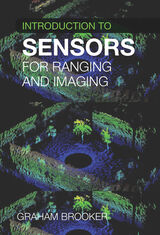
Introduction to Sensors for Ranging and Imaging
Graham Brooker
The Institution of Engineering and Technology, 2009
This is a comprehensive textbook and reference that provides a solid background in active sensing technology. Beginning with a historical overview and an introductory section on signal generation, filtering and modulation, it follows with a section on radiometry (infrared and microwave) as a background to the active sensing process. The core of the book is concerned with active sensing, starting with the basics of time-of-flight sensors (operational principles, components), and goes through the derivation of the radar range equation, and the detection of echo signals, both fundamental to the understanding of radar, sonar and lidar imaging. Several chapters cover signal propagation of both electromagnetic and acoustic energy, target characteristics, stealth and clutter. The remainder of the book involves the basics of the range measurement process, active imaging with an emphasis on noise and linear frequency modulation techniques, Doppler processing, and target tracking.
[more]
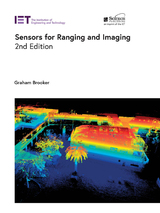
Sensors for Ranging and Imaging
Graham Brooker
The Institution of Engineering and Technology, 2022
Sensors for Ranging and Imaging is a comprehensive textbook and professional reference that provides a solid background in active sensing technology. This new edition has been comprehensively updated and expanded to include the latest radar technologies.
[more]
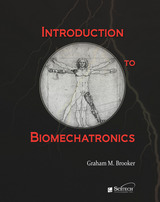
Introduction to Biomechatronics
Graham M. Brooker
The Institution of Engineering and Technology, 2012
This is the age of biomechatronics, a time where mechanics and electronics can interact with human muscle, skeleton, and nervous systems to assist or replace limbs, senses, and even organs damaged by trauma, birth defects, or disease. Introduction to Biomechatronics provides biomedical engineering students and professionals with the fundamental mechatronic (mechanics, electronics, robotics) engineering knowledge they need to analyze and design devices that improve lives. The first half of the book provides the engineering background to understand all the components of a biomechatronic system: the human subject, stimulus or actuation, transducers and sensors, signal conditioning elements, recording and display, and feedback elements. It also includes the major functional systems of the body to which biomechatronics can be applied including: biochemical, nervous, cardiovascular, respiratory, and musculoskeletal. The second half discusses five broadly based inventions from a historical perspective and supported by the relevant technical detail and engineering analysis. It begins with the development of hearing prostheses including middle-ear implantable hearing devices and the amazingly successful cochlear implant. This is followed by sensory substitution and visual prostheses that researchers hope will do the same for the blind as the cochlear implant has done for the deaf. The last three chapters are more mechatronic in focus, examining artificial hearts, respiratory aids from the iron lung to the latest CPAP devices, and finally artificial limbs from the first hooks and peg legs to limbs that move and have a sense of touch.
[more]

Principles of Microwave Measurements
G.H. Bryant
The Institution of Engineering and Technology, 1993
With this book engineers will understand the fundamental theoretical bases of modern microwave measurements. The narrative is firmly based on the principles of swept frequency techniques, though single frequency measurements, for instance of power, are also fully covered. By the use of flowgraph techniques and careful approximations, the author has given physical meaning to the mathematical arguments and has been careful to show the practical and theoretical limitations on measurement accuracy. The book covers a wide range of microwave measurements in the time and frequency domains, including reflectometry, the Smith chart, spectrum analysers, vector and scalar analysers, multiports, power, noise, frequency stability, time domain reflectometry, and a comprehensive account of antenna far and near field measurements. It is particularly recommended for young engineers requiring a good background in microwave measurement principles and will also be a useful reference for more experienced engineers.
[more]

Handbook of Cybersecurity for e-Health
Bill Buchanan
The Institution of Engineering and Technology, 2024
In this title, a team of top experts address cyber security for e-Health technologies and systems. It examines the need for better security and privacy infrastructure, outlining methods and policies for working with sensitive data. The authors focus on the latest methods and visionary work within health and social care for cyber security, making it vital reading for professionals and researchers in healthcare technologies and security, professionals in public health and law, healthcare policy developers and government decision makers.
[more]
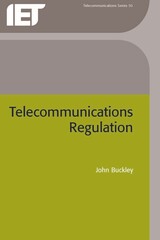
Telecommunications Regulation
John Buckley
The Institution of Engineering and Technology, 2003
Telecommunications Regulation examines the background to regulation and the work of the regulator. It discusses typical regulatory rules and the legal and administrative framework for regulation, and looks at regulatory strategies, market structures and approaches to price control. The book includes a number of case studies which show how regulators engage with such topical issues as interconnection and loop unbundling, and also features technical coverage of both numbering and number portability. Finally, it looks at new products and services such as virtual network operators, intelligent networks, radio spectrum and next generation networks, and considers the impact these might have on the future of regulation.
[more]

Broadband Communications and Home Networking
Scott R. Bullock
The Institution of Engineering and Technology, 2001
This book provides the engineer and manager with a very good understanding of the processes needed to effectively perform the system design for broadband communication systems and home networking approaches. It is ideal for all engineers that design and analyze wireless, spread spectrum and basic broadband communication systems and are involved with the design of basic networking systems. It provides a good intuitive approach starting from basic telephony to satellite communications.
[more]
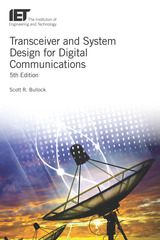
Transceiver and System Design for Digital Communications
Scott R. Bullock
The Institution of Engineering and Technology, 2018
This applied engineering reference covers a wide range of wireless communication design techniques; including link budgets, error detection and correction, adaptive and cognitive techniques, and system analysis of receivers and transmitters. Digital modulation and demodulation techniques using phase-shift keyed and frequency hopped spread spectrum systems are addressed. The book includes sections on broadband communications and home networking, satellite communications, global positioning systems (GPS), search, acquisition and track, and radar communications. Various techniques and designs are evaluated for modulating and sending digital signals, and the book offers an intuitive approach to probability plus jammer reduction methods using various adaptive processes. This title assists readers in gaining a firm understanding of the processes needed to effectively design wireless digital communication and cognitive systems with a basic understanding of radar.
[more]
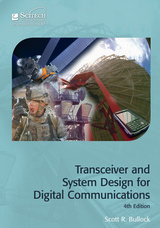
Transceiver and System Design for Digital Communications
Scott R. Bullock
The Institution of Engineering and Technology, 2014
This applied engineering reference covers a wide range of wireless communication design techniques; including link budgets, error detection and correction, adaptive and cognitive techniques, and system analysis of receivers and transmitters. Digital modulation and demodulation techniques using phase-shift keyed and frequency hopped spread spectrum systems are addressed. The title includes sections on broadband communications and home networking, satellite communications, and global positioning systems (GPS). Various techniques and designs are evaluated for modulating and sending digital signals, and the book offers an intuitive approach to probability plus jammer reduction methods using various adaptive processes. This title assists readers in gaining a firm understanding of the processes needed to effectively design wireless digital communication systems.
[more]
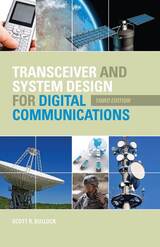
Transceiver and System Design for Digital Communications
Scott R. Bullock
The Institution of Engineering and Technology, 2009
Now in its 3rd edition, this successful book provides an intuitive approach to transceiver design, allowing a broad spectrum of readers to understand the topics clearly. It covers a wide range of data link communication design techniques, including link budgets, dynamic range and system analysis of receivers and transmitters used in data link communications, digital modulation and demodulation techniques of phase-shift keyed and frequency hopped spread spectrum systems using phase diagrams, multipath, gain control, an intuitive approach to probability, jamming reduction method using various adaptive processes, global positioning systems (GPS) data link, and direction-finding and interferometers, plus a section on broadband communications and home networking. Various techniques and designs are evaluated for modulating and sending digital data. Thus readers gain a firm understanding of the processes needed to effectively design wireless data link communication systems.
[more]

VHF and UHF Antennas
R.A. Burberry
The Institution of Engineering and Technology, 1992
This book describes VHF and UHF antennas for the range 30-3000 MHz developed over the last 50 years. Many designs that have not previously been described in detail are covered. The author's long, practical experience is shown in numerous examples of new uses for old designs.
[more]

Leaky Waves in Electromagnetics
Paolo Burghignoli
The Institution of Engineering and Technology, 2024
Leaky waves can explain observed phenomena associated with both antennas and fundamental electromagnetic propagation with minimal numerical calculation. The subject is of current interest as various forms of leaky-wave antennas continue to be developed. Also, the underlying theory is proving useful to explain new phenomena such as giant transmission through arrays of sub-wavelength holes, a discovery that has generated considerable interest in the physics and engineering communities.
[more]

Television
An international history of the formative years
R.W. Burns
The Institution of Engineering and Technology, 1998
From the first notions of 'seeing by electricity' in 1878, through the period of the first demonstration of rudimentary television in 1926 and up to 1940, when war brought the advance of the technology to a temporary halt, the development of television gathered about it a tremendous history. Following the discovery of the photo-conductive effect, numerous schemes for television were suggested but it was in the wake of Baird's early demonstrations that real industrial interest developed and the pace of progress increased. Much research and development work was undertaken in the UK, the US, Germany and France. By 1936 television technology had advanced to the point where high definition broadcasting was realistic.
[more]

British Television
The formative years
Russell Burns
The Institution of Engineering and Technology, 1986
On 2 November 1936 the world's first high definition television station was inaugurated at Alexandra Palace. Two competing companies, Marconi-EMI Television Company Ltd and Baird Television Ltd, provided studio and transmitting equipment for the new service which operated, on an alternate basis, with the systems of the two companies. After a trial period the 405-line system of the Marconi-EMI company was adopted and the last transmission by the 240-line system of Baird Television Ltd was sent out on 30 January 1937.
[more]

The Life and Times of A.D. Blumlein
Russell Burns
The Institution of Engineering and Technology, 2000
Alan Dower Blumlein was a genius and has been described as the greatest British electronics engineer of the twentieth century. Although he was tragically killed at the age of 38, he contributed enormously to the fields of telephony and electrical measurements, monophonic and stereophonic recording and reproduction, high definition television, electronics, antennas and cables, and radar systems of various types. His accidental death in June 1942 was described by an Air Chief Marshal as 'a catastrophe', and the Secretary of State for Air said that 'it would be impossible to over-rate the importance of the work on which [Blumlein was] engaged': his loss was a 'national disaster'. He was responsible for saving many thousands of lives during the Second World War, and his endeavours in peacetime led to pleasure being given to millions of people.
[more]

Communications
An international history of the formative years
Russell W. Burns
The Institution of Engineering and Technology, 2004
Communications: An international history of the formative years traces the evolution of communications from 500 BC, when fire beacons were used for signalling, to the 1940s, when high definition television systems were developed for the entertainment, education and enlightenment of society. The book does not simply provide a chronicle of dates and events, nor is it a descriptive catalogue of devices and systems. Rather, it discusses the essential factors - technical, political, social, economic and general - that enabled the evolution of modern communications. The author has taken a contextual approach to show the influence of one discipline upon another, and the unfolding story has been widely illustrated with contemporary quotations, allowing the progress of communications to be seen from the perspective of the times and not from the standpoint of a later generation.
[more]
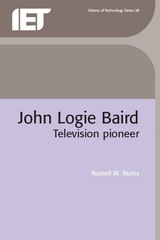
John Logie Baird
Television pioneer
Russell W. Burns
The Institution of Engineering and Technology, 2000
Professor Russell Burns attempts to offer a balanced biography of one of the twentieth century's outstanding inventors, published to coincide with the 75th anniversary of Baird's first public demonstration of a rudimentary television system. The author's meticulous treatment is based on primary source documents although many personal recollections are included to add humour, colour and context. A great deal of material regarding Baird's business partnerships in the early 1920s has only recently become available to researchers and is covered here for the first time.
[more]

The Struggle for Unity
Colour television, the formative years
Russell W. Burns
The Institution of Engineering and Technology, 2008
The Struggle for Unity: Colour television, the formative years traces the evolution of colour television from 1928, when rudimentary colour television was demonstrated for the first time, to c.1966, when the NTSC system and its variants, the PAL and SECAM systems, became widely available for the entertainment, education and enlightenment of society. Among the many topics discussed in the book, mention is made of the following: compatibility and non-compatibility; mechanical and all-electronic systems; field, line and dot sequential scanning; bandwidth constraints and band-sharing techniques; the CBS-RCA conflict; the relative merits of the different systems; the attempt to achieve unity of purpose in Europe; standards; and the development of colour cameras and display tubes. The book, which is based predominantly on written primary source material, does not simply provide a chronicle of dates and descriptions of events, devices and systems. Rather, it discusses the essential factors of colour television history from a general, technical and political viewpoint. Great care has been taken to ensure that an unbiased, accurate and balanced history has been written. Numerous references are given at the end of each chapter and the book is profusely illustrated.
[more]
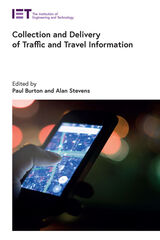
Collection and Delivery of Traffic and Travel Information
Paul Burton
The Institution of Engineering and Technology, 2021
Technologies for traffic and travel information (TTI) have been evolving rapidly in recent years. This book offers an overview of three generations of TTI technology, beginning with the first generation of human to human information transmission. The second generation incorporated machine to human information exchange, with the development of classification and transmission protocols such as RDS-TMC and TPEG. A third generation of machine to machine communication is now emerging, disrupting TTI technology and creating the need for this new reference work, which covers gathering information from automated sensors, its digital processing and transmission, and its use by increasingly intelligent agents and vehicles.
[more]

Wireless
The Crucial Decade: History of the British wireless industry 1924-34
Gordon Bussey
The Institution of Engineering and Technology, 1990
The crucial decade for the development of the domestic wireless was 1924-34. At the beginning of the period most receivers in Britain were crystal sets, but by the end nearly all sets were on the mains, using valves and mostly with superhet circuits-broadly the same as those in use today.
[more]
READERS
Browse our collection.
PUBLISHERS
See BiblioVault's publisher services.
STUDENT SERVICES
Files for college accessibility offices.
UChicago Accessibility Resources
home | accessibility | search | about | contact us
BiblioVault ® 2001 - 2024
The University of Chicago Press









